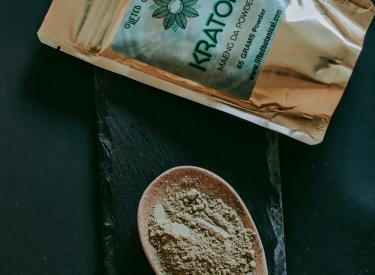
Women in Recovery
America is in the midst of the worst addiction crisis in our country’s history, and it’s a crisis that uniquely affects women. Though men use illegal drugs at slightly higher rates, women who use substances, or who are at risk of developing a substance use disorder, face specific challenges, dangers, and discrimination.
March is Women's History Month, which is a great opportunity to reflect on a few important things to know about women and addiction.
Most research on substance use disorders focused on men until the 1990s.
Though federally funded studies are now required to enroll women, the research is still playing catch-up. There’s a lot we don’t know about how women are impacted by substance use disorders, and what types of treatment are most effective for women.
Specialized research is urgently needed, because millions of American women are affected by addiction. Though women are slightly less likely to overdose than men, women are just as likely as men to develop a substance use disorder. Women are also more likely to experience cravings, and to experience recurrences of their symptoms (also known as a relapse).
Pain and trauma contribute to addiction risk, and women experience those things at much higher rates than men.
Women experience pain at higher rates than men. But sexism in the healthcare industry often means this pain goes undiagnosed and untreated or undertreated, which can result in women self-medicating with substances.
Even when women’s pain is addressed, addiction is still a risk. The healthcare system’s overreliance on opioids disproportionately impacts women. A study from Brigham and Women’s Hospital and Harvard Medical School found that, following C-sections, women were prescribed twice as many opioids as needed. Further, in 2016, three million people become persistent opioid users following a post-surgical prescription—and two million of those people were women. Just 20% of women surveyed in 2018 reported that they were screened for addiction before their doctor wrote an opioid prescription.
Trauma also increases a person’s risk of addiction—and women are uniquely impacted here, too. According to the American Psychological Association, “research indicates that women are twice as likely to develop PTSD, experience a longer duration of posttraumatic symptoms and display more sensitivity to stimuli that remind them of the trauma.”
Women who use drugs face unique stigma, especially during pregnancy.
American society and healthcare structures have long perceived women as mothers above all else—even before they start families, or regardless of whether they choose to have children at all. This puts women’s bodies at greater risk of judgment and policing. As a result, when women are coping with drug addiction, they often experience a more intense type of social shame and discrimination than their male peers.
The situation only worsens when women do become pregnant. As Shatterproof scientific board member Lipi Roy noted in Forbes, women who use drugs are too often labeled as “child abusers” and sent to jail, not treatment.
Though effective treatments exist for pregnant women with substance use disorders, they are tragically underused. Medications are one of the best treatment options for both mother and child, but despite the evidence proving their efficacy, few doctors are willing to prescribe them. This is rooted in stigma, not research, and it hurts women and their families. As harm reduction advocate Becca Lilley told Filter magazine, “Once you get pregnant, even if you are using drugs, [people] expect you to just stop right then and there. If you don’t, then you are a bad mom.”
Women of color, especially Black and Latina women, face even greater discrimination.
Inequity is a huge problem in addiction treatment, and that affects women of color specifically—pregnant women of color even more specifically. According to Massachusetts General Hospital (MGH), Black and Latina women who are addicted to opioids "are significantly less likely to receive or to consistently use any medication to treat their opioid use disorder during pregnancy." Given the already dire health disparities for Black woman during and after childbirth—black mothers die at more than three times the rate of white mothers—these additional addiction treatment barriers can be life-threatening.
What's more, experiences with racism can increase risk of developing a substance use disorder in the first place.
Gender-sensitive treatment programming can help promote women’s recovery.
Addiction treatment is never a “one size fits all” situation. All people, regardless of gender, need an individualized plan in order to best meet their needs.
Still, most addiction treatment programs are rooted in research based on men’s experiences with substance use disorder. Even support groups, like Alcoholics Anonymous, are based upon the experiences and needs of (white, affluent) men.
In order to help more women recover, addiction treatment programs must invest in solutions tailor-made for women. Programs should offer support services, like prenatal care and child care, that make it easier for women to focus on their recovery. And above all, programs must focus on addressing the unique trauma, challenges, and discrimination that women with substance use disorders face.




